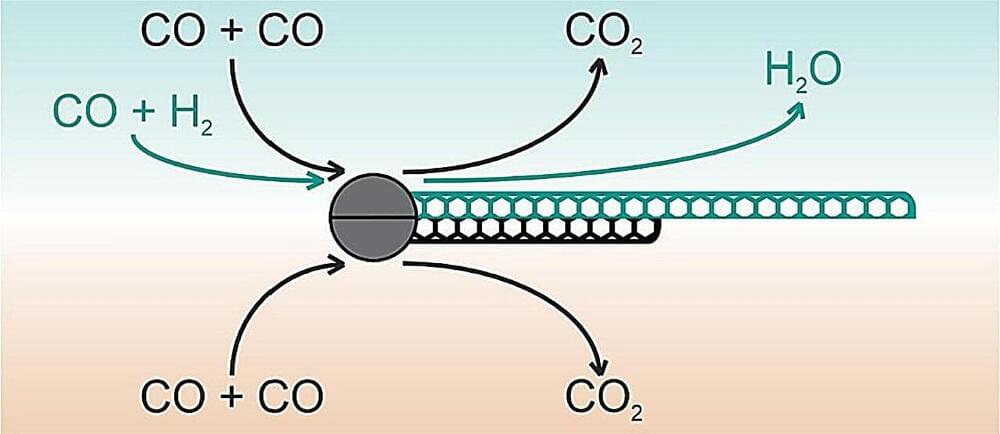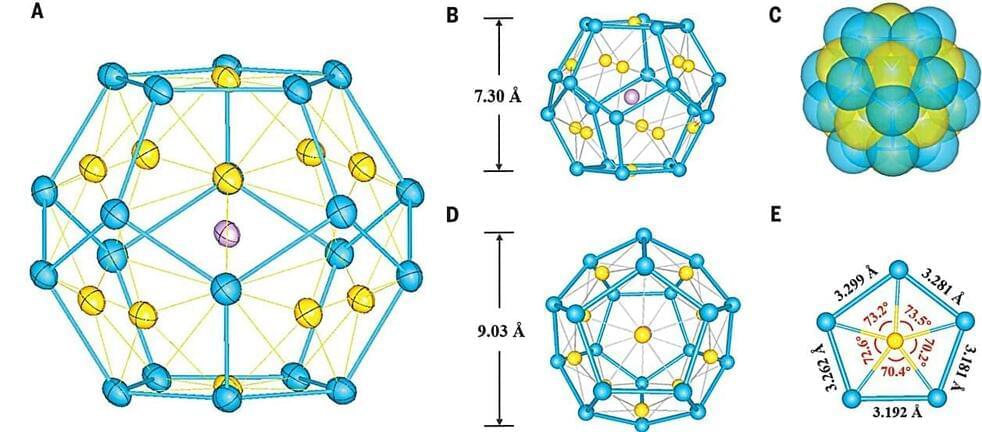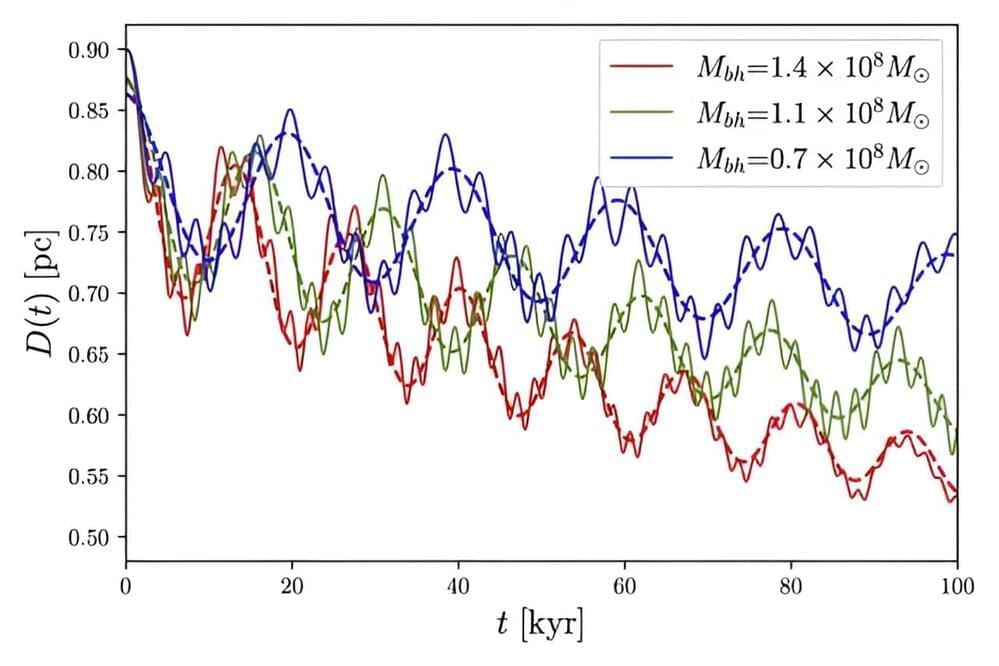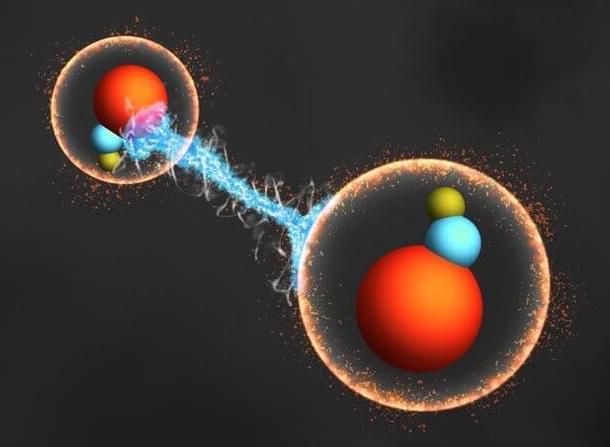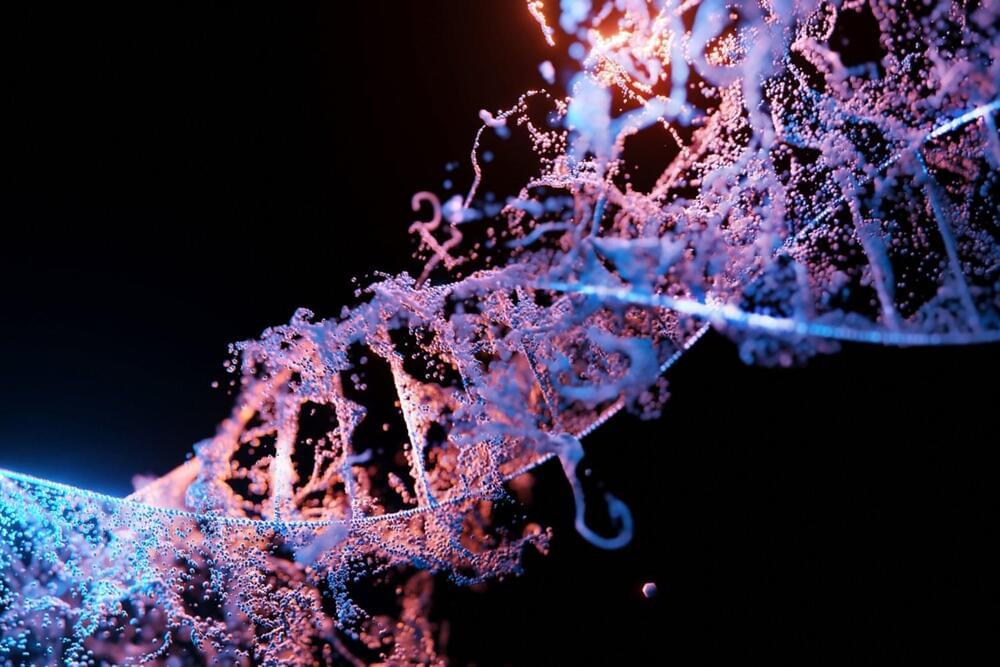Page 1071
Nov 29, 2023
Researchers triple carbon nanotube yield for LEDs, solar cells, flexible and transparent electronics
Posted by Dan Breeden in categories: biotech/medical, chemistry, engineering, nanotechnology, solar power
Skoltech scientists have found a way to improve the most widely used technology for producing single-walled carbon nanotube films—a promising material for solar cells, LEDs, flexible and transparent electronics, smart textiles, medical imaging, toxic gas detectors, filtration systems, and more. By adding hydrogen gas along with carbon monoxide to the reaction chamber, the team managed to almost triple carbon nanotube yield compared with when other growth promoters are used, without compromising quality.
Until now, low yield has been the bottleneck limiting the potential of that manufacturing technology, otherwise known for high product quality. The study has been published in the Chemical Engineering Journal.
Although that is not how they’re really made, conceptually, nanotubes are a form of carbon where sheets of atoms in a honeycomb arrangement—known as graphene—are seamlessly rolled into hollow cylinders.
Nov 29, 2023
Researchers achieve quantum storage of entangled photons at telecom wavelengths in a crystal
Posted by Dan Breeden in categories: computing, quantum physics, security
Quantum technologies are currently maturing at a breath-taking pace. These technologies exploit principles of quantum mechanics in suitably engineered systems, with bright prospects such as boosting computational efficiencies or communication security well beyond what is possible with devices based on today’s ‘classical’ technologies.
As with classical devices, however, to realize their full potential, quantum devices must be networked. In principle, this can be done using the fiber-optic networks employed for classical telecommunications. But practical implementation requires that the information encoded in quantum systems can be reliably stored at the frequencies used in telecom networks—a capability that has not yet been fully demonstrated.
Writing in Nature Communications, the group of Prof. Xiao-Song Ma at Nanjing University reports record-long quantum storage at telecom wavelengths on a platform that can be deployed in extended networks, paving the way for practical large-scale quantum networks.
Nov 29, 2023
A fullerene-like molecule made entirely of metal atoms
Posted by Dan Breeden in category: particle physics
A small team of chemists from Nankai University, Nanjing Tech University and Shanxi University, all in China, working with a colleague from Universidad San Sebastián, in Chile, has, for the first time, created a fullerene-like molecule made entirely of metal atoms.
In their paper published in the journal Science, the group describes how they created the molecule by accident while they were conducting research experiments with antimony, potassium and gold atoms.
A fullerene is a form of carbon where its molecules are connected by single and double bonds which result in the formation of a closed cage-like structure. It was first realized in 1985 and since that time analogous inorganic fullerenes have been created using a variety of compounds. But until now, none of them have been purely metal.
Nov 29, 2023
Dark matter could help solve the final parsec problem of black holes
Posted by Dan Breeden in categories: computing, cosmology, information science, physics
When galaxies collide, their supermassive black holes enter into a gravitational dance, gradually orbiting each other ever closer until eventually merging. We know they merge because we see the gravitational beasts that result, and we have detected the gravitational waves they emit as they inspiral. But the details of their final consummation remain a mystery. Now a new paper published on the pre-print server arXiv suggests part of that mystery can be solved with a bit of dark matter.
Just as the famous three-body problem has no general analytical solution for Newtonian gravity, the two-body problem has no general solution in general relativity. So, we have to resort to computer simulations to model how black holes orbit each other and eventually merge.
For binary black holes that are relatively widely separated, our simulations work really well, but when black holes are close to each other things get complicated. Einstein’s equations are very nonlinear, and modeling the dynamics of strongly interacting black holes is difficult.
Nov 29, 2023
Synthetic Biology Exclusive Offers
Posted by Dan Breeden in categories: bioengineering, biotech/medical
Discover our selection of discounted synthetic biology tools, perfect for advancing biomedicine, cell-cultured meats, and sustainable textiles.
Nov 29, 2023
Is Quantum Artificial Intelligence Close? Understanding The Challenges of Quantum AI
Posted by Dan Breeden in categories: quantum physics, robotics/AI
Predicting the timelines of quantum artificial intelligence is difficult and managing expectations are almost impossible to realize.
Nov 29, 2023
Scientists propose new method to search for deviations from the Standard Model of physics
Posted by Dan Breeden in category: particle physics
In the search for new particles and forces in nature, physicists are on the hunt for behaviors within atoms and molecules that are forbidden by the tried-and-true Standard Model of particle physics. Any deviations from this model could indicate what physicists affectionately refer to as “new physics.”
Caltech assistant professor of physics Nick Hutzler and his group are in pursuit of specific kinds of deviations that would help solve the mystery of why there is so much matter in our universe. When our universe was born about 14 billion years ago, matter and its partner, antimatter, are believed to have existed in equal measure.
Typically, matter and antimatter cancel each other out, but some kind of asymmetry existed between the different types of particles to cause matter to win out over antimatter. Hutzler’s group uses tabletop experiments to look for symmetry violations—the deviant particle behaviors that led to our lopsided matter-dominated universe.
Nov 29, 2023
A gamma-ray pulsar milestone inspires innovative astrophysics and applications
Posted by Dan Breeden in categories: energy, physics, space
The U.S. Naval Research Laboratory (NRL), in conjunction with the international Fermi Large Area Telescope Collaboration, announce the discovery of nearly 300 gamma ray pulsars in the publication of their Third Catalog of Gamma Ray Pulsars. This milestone comes 15 years after the launch of Fermi in 2008 when there were fewer than ten known gamma-ray pulsars.
“Work on this important catalog has been going on in our group for years,” said Paul Ray, Ph.D., head of the High Energy Astrophysics and Applications Section at NRL. “Our scientists and postdocs have been able to both discover and analyze the timing behavior and spectra of many of these newfound pulsars as part of our quest to further our understanding of these exotic stars that we are able to use as cosmic clocks.”
Pulsars are formed when massive stars have burned through their fuel supply and become unable to resist the inward pull of their own gravity. This results in the star collapsing into a dense, spinning, magnetized neutron star. Their spinning magnetic fields send out beams of gamma rays, the most energetic form of light. As these beams sweep across the Earth, the highly sensitive Fermi gamma-ray telescope can observe their periodic energy pulses. With more than 15 years of data, Fermi has transformed the field of pulsar research.
Nov 29, 2023
MIT scientists build a system that can generate AI models for biology research
Posted by Quinn Sena in categories: biological, robotics/AI
“In your machine-learning project, how much time will you typically spend on data preparation and transformation?” asks a 2022 Google course on the Foundations of Machine Learning (ML). The two choices offered are either “Less than half the project time” or “More than half the project time.” If you guessed the latter, you would be correct; Google states that it takes over 80 percent of project time to format the data, and that’s not even taking into account the time needed to frame the problem in machine-learning terms.
“It would take many weeks of effort to figure out the appropriate model for our dataset, and this is a really prohibitive step for a lot of folks that want to use machine learning or biology,” says Jacqueline Valeri, a fifth-year PhD student of biological engineering in Collins’s lab who is first co-author of the paper.
BioAutoMATED is an automated machine-learning system that can select and build an appropriate model for a given dataset and even take care of the laborious task of data preprocessing, whittling down a months-long process to just a few hours. Automated machine-learning (AutoML) systems are still in a relatively nascent stage of development, with current usage primarily focused on image and text recognition, but largely unused in subfields of biology, points out first co-author and Jameel Clinic postdoc Luis Soenksen PhD ‘20.

